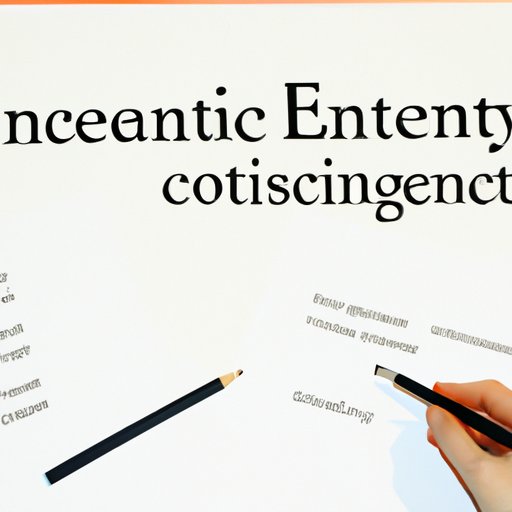Introduction
Historians are responsible for studying and researching the past in order to better understand the present. They use evidence from a variety of sources in order to draw conclusions about the past. Being a historian requires knowledge of the past, an ability to analyze evidence, and the skills to present findings professionally. Here are key steps to becoming a successful historian.
Research and Understand Historical Context
The first step in being a historian is to research and understand the historical context in which you are studying. This involves identifying the time period, analyzing influential figures, and gathering relevant sources.
Identify the Time Period: Before beginning your research, it is important to identify the time period you are studying. Knowing when the events occurred will help you determine what sources are available and what perspectives are relevant. This will also help you narrow down your research focus and make sure you are looking at the most pertinent information.
Analyze Influential Figures: It is also important to consider who the influential figures were during this time period. Understanding the lives and motivations of influential individuals can provide insight into the context of the time period. Pay close attention to the political and social leaders as well as any religious or cultural figures.
Gather Relevant Sources: Once you have identified the time period and influential figures, you can begin to gather relevant sources. This could include books, articles, photographs, manuscripts, and other documents. Make sure you are gathering sources from both primary and secondary sources in order to get a comprehensive picture of the past.
Develop a Research Plan
Once you have gathered your sources, it is important to develop a research plan. This will help you organize your evidence and make sure you are collecting the most relevant information.
Determine What Evidence to Collect: Before diving into the research, it is important to determine what evidence you need to collect. This could include personal accounts, newspaper articles, scientific data, or any other relevant evidence. Ask yourself what evidence will best support your thesis and make sure you are focusing on that information.
Evaluate Sources for Reliability: Once you have identified the evidence you need to collect, it is important to evaluate the sources for reliability. Consider the author’s credentials and the date the source was published. Also, be aware of any potential bias or agenda the author may have. This will help you decide if the source is reliable and should be included in your research.

Analyze Evidence and Draw Conclusions
Once you have collected and evaluated your evidence, it is time to analyze the evidence and draw conclusions. This involves considering multiple perspectives and connecting the evidence to your thesis.
Consider Multiple Perspectives: When analyzing the evidence, it is important to consider multiple perspectives. This means looking at the evidence from different angles and understanding how different people experienced the same event. This helps create a fuller picture of the past and allows for more accurate conclusions.
Connect Evidence to Thesis: Once you have considered multiple perspectives, it is time to connect the evidence to your thesis. This means making sure the evidence supports your argument and draws the conclusion you intended. If the evidence does not support your argument, you may need to adjust your thesis or reconsider your evidence.
Compile and Synthesize Evidence
After analyzing the evidence and drawing conclusions, it is important to compile and synthesize the evidence. This means creating an organized narrative and using technology to access data.
Create an Organized Narrative: Once you have analyzed the evidence, it is important to create an organized narrative. This means organizing the evidence into a cohesive story that follows a logical progression and makes sense to the reader. Make sure each piece of evidence is clearly connected to your thesis.
Use Technology to Access Data: Technology has made it easier than ever for historians to access data. There are numerous databases and websites dedicated to preserving and sharing historical information. Make sure to take advantage of these resources in order to access detailed and accurate information.
Explore Primary Sources
In addition to using technology to access data, it is important to explore primary sources. This includes archives, manuscripts, and photographs. Exploring primary sources allows you to get a firsthand look at the past and can provide unique insights.
Utilize Archives, Manuscripts and Photographs: Archives, manuscripts, and photographs are all valuable primary sources. Archives can provide detailed information about specific events or people. Manuscripts can provide insight into the thoughts and feelings of people during the time period. And photographs can help bring the past to life.
Compare and Contrast Different Sources: When exploring primary sources, it is important to compare and contrast different sources. This means looking at the same event from different perspectives in order to get a full understanding of what happened. This can help you form a more accurate conclusion and draw connections between different sources.
Present Findings Professionally
Once you have compiled and synthesized your evidence, it is time to present your findings. This involves choosing an appropriate format and making sure your presentation is clear and concise.
Choose Appropriate Format: When presenting your findings, it is important to choose the right format. This could include a written report, an oral presentation, or a visual aid such as a poster. Choose the format that best suits your topic and allows you to effectively communicate your message.
Make Sure Presentation is Clear and Concise: No matter the format, it is important to make sure your presentation is clear and concise. Make sure the information is easy to understand and that your points are supported by evidence. Also, make sure you are providing enough detail without going overboard.
Conclusion
Being a historian requires knowledge of the past, an ability to analyze evidence, and the skills to present findings professionally. The key steps to becoming a successful historian include researching and understanding historical context, developing a research plan, analyzing evidence and drawing conclusions, compiling and synthesizing evidence, exploring primary sources, and presenting findings professionally. With these steps, you can become a successful historian.
(Note: Is this article not meeting your expectations? Do you have knowledge or insights to share? Unlock new opportunities and expand your reach by joining our authors team. Click Registration to join us and share your expertise with our readers.)
